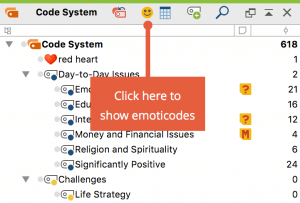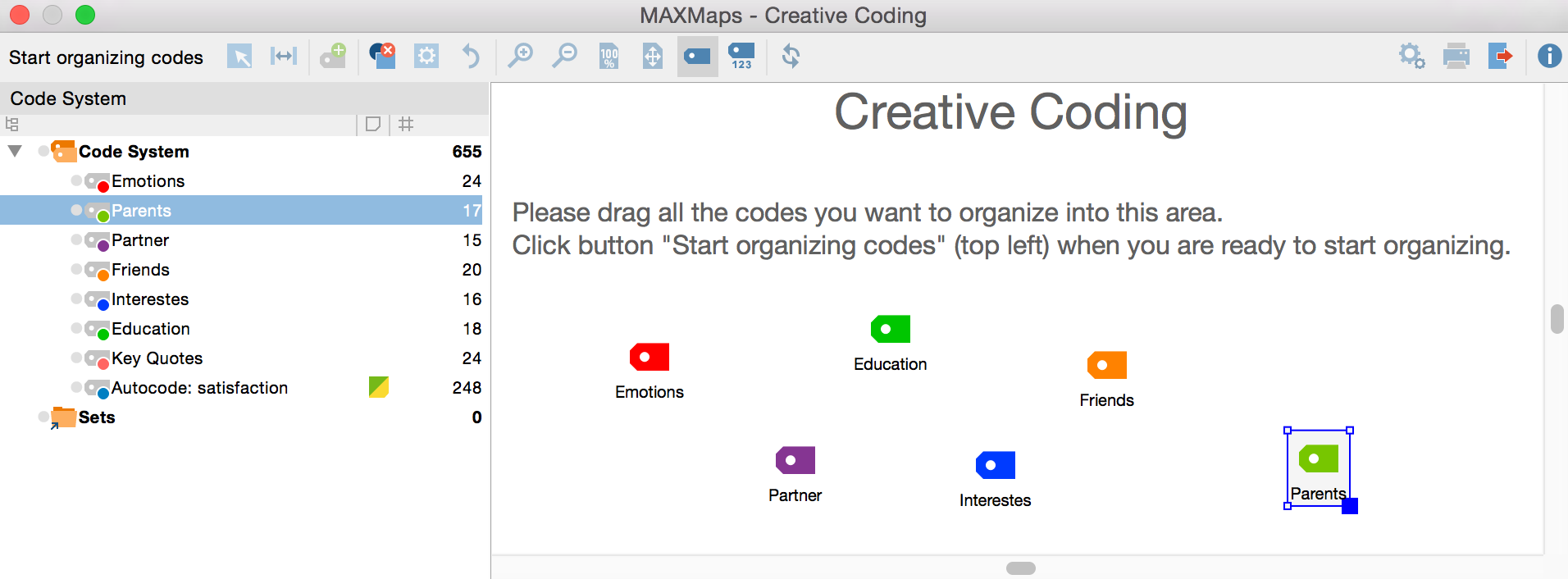

If you’re looking for a more visual comparison, then creating a Two-Cases Model could be a suitable choice for you. For example, let’s compare what New Yorkers and people from Indiana think about wellness themes, such as “Health” and “Recreation”: In other words, the Interactive Quote Matrix is a table that displays the text of the coded segments arranged according to the variables of your own choice. The cells contain the coded segments so that the coded contents for the selected groups can be compared with each other. The selected groups form the columns and the selected codes the rows of the matrix. Simply select 2 or more document groups and the codes you want to compare to create a custom segment matrix! MAXQDA’s Interactive Quote Matrix then is opened with your joint display of themes and variables.
#Coding in maxqda code#
Your go-to tool could, for example, be MAXQDA’s Compare Cases & Groups function in the Analysis tab, which allows you to easily compare coded data (qualitative data) and code frequencies (qualitative data transformed into quantitative data). Luckily, MAXQDA has multiple options that will allow you to draw comparisons within your data. Compare Your Coded DataĪ comparison of several cases or themes is often the aim we have in mind while conducting our research.

Local settings in the Retrieved Segments window Tip: Did you know that you can use variables or weight scores for the retrieval process? Have you tried using MAXQDA’s Complex Coding Query? You can even get an overview or export and print your retrieved segments! Learn more about retrieval in the MAXQDA Online Manual. All coded segments, including all of their source information, will appear in the “Retrieved Segments” window. Activation of codes works just like the activation of documents (right-click the code and choose the option “Activate” or click on the symbol in front of the code name\subcode name).

Activate all documents and codes you are interested in. If you are, for example, analyzing interviews, you may ask: “What was said about a certain topic and who said what?” The magic word to get exactly those answers is Retrieval. You can then immediately see if a document or group is activated: Both the name and symbol are colored red and a red arrow appears in front of them (see right-hand screenshot below).Īctivate documents and codes to retrieve coded segments So, how does the activation work? It’s easy: In every document’s or document group’s context menu (right-click) you will see the option “Activate” right at the top. Simply activate the documents and the codes and voila, you can retrieve your coding work with just two clicks!īy activating, you can select specific documents and codes to focus on analyzing. After you have assigned a code to certain segments in a document, you’ll be able to instantly retrieve all the segments you coded with that code. This window allows you to see the coding work you have done to your data. Let’s take a moment to get to know MAXQDA’s “Retrieved Segments” window. What are some analysis options once you’ve completed those first importing and coding steps? In this article, we’ll give you some tips and ideas of options that you can explore further for your own analysis journey.


 0 kommentar(er)
0 kommentar(er)
